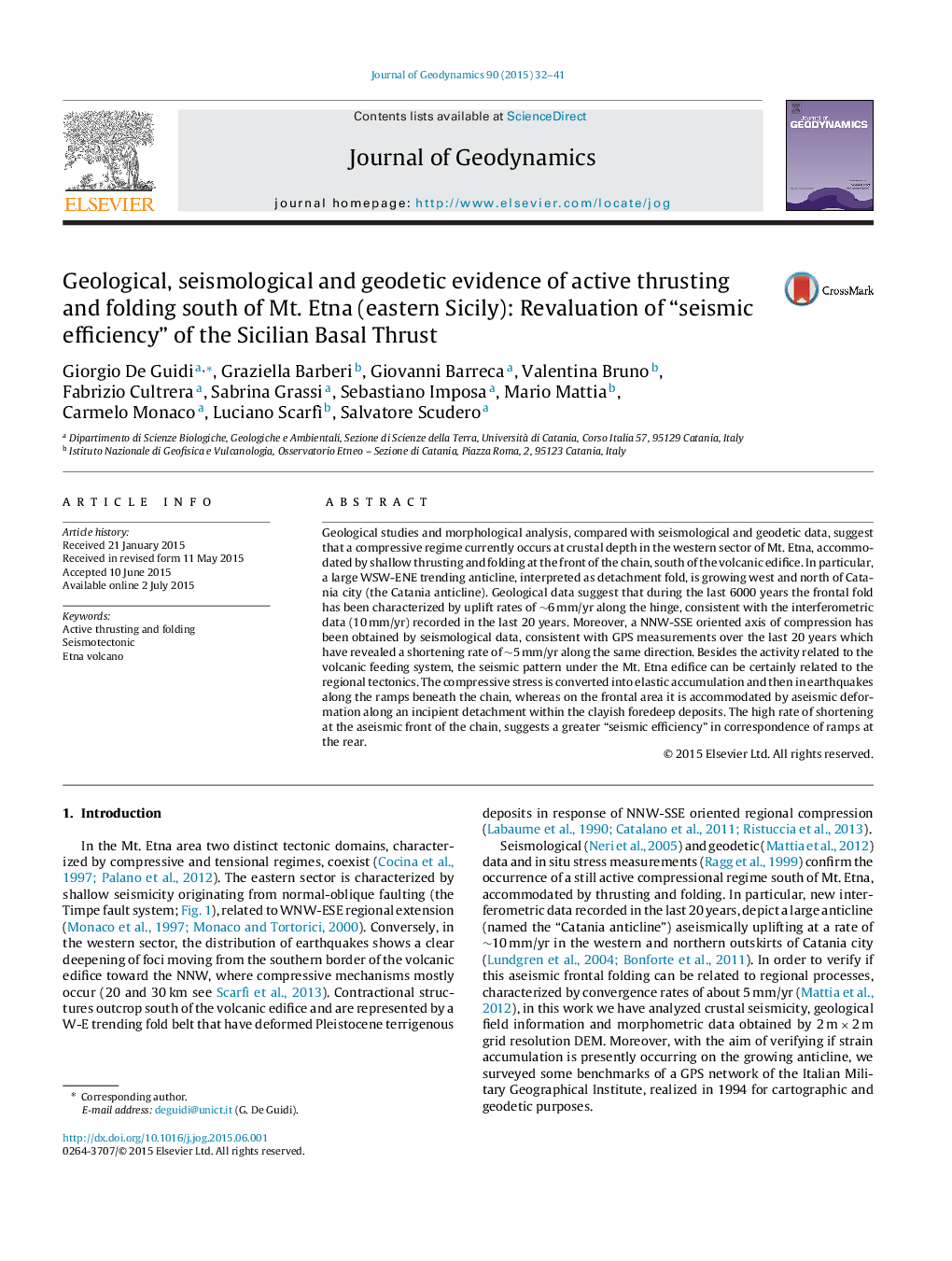| Article ID | Journal | Published Year | Pages | File Type |
|---|---|---|---|---|
| 4687972 | Journal of Geodynamics | 2015 | 10 Pages |
Abstract
Geological studies and morphological analysis, compared with seismological and geodetic data, suggest that a compressive regime currently occurs at crustal depth in the western sector of Mt. Etna, accommodated by shallow thrusting and folding at the front of the chain, south of the volcanic edifice. In particular, a large WSW-ENE trending anticline, interpreted as detachment fold, is growing west and north of Catania city (the Catania anticline). Geological data suggest that during the last 6000 years the frontal fold has been characterized by uplift rates of â¼6Â mm/yr along the hinge, consistent with the interferometric data (10Â mm/yr) recorded in the last 20 years. Moreover, a NNW-SSE oriented axis of compression has been obtained by seismological data, consistent with GPS measurements over the last 20 years which have revealed a shortening rate of â¼5Â mm/yr along the same direction. Besides the activity related to the volcanic feeding system, the seismic pattern under the Mt. Etna edifice can be certainly related to the regional tectonics. The compressive stress is converted into elastic accumulation and then in earthquakes along the ramps beneath the chain, whereas on the frontal area it is accommodated by aseismic deformation along an incipient detachment within the clayish foredeep deposits. The high rate of shortening at the aseismic front of the chain, suggests a greater “seismic efficiency” in correspondence of ramps at the rear.
Keywords
Related Topics
Physical Sciences and Engineering
Earth and Planetary Sciences
Earth-Surface Processes
Authors
Giorgio De Guidi, Graziella Barberi, Giovanni Barreca, Valentina Bruno, Fabrizio Cultrera, Sabrina Grassi, Sebastiano Imposa, Mario Mattia, Carmelo Monaco, Luciano Scarfì, Salvatore Scudero,
